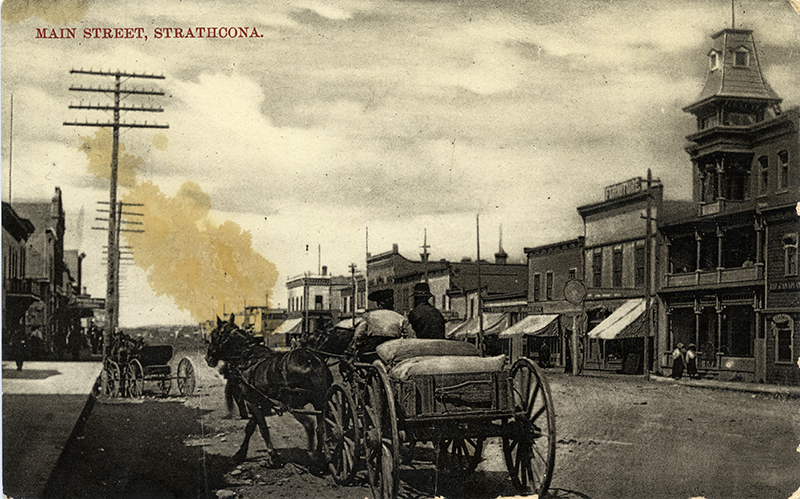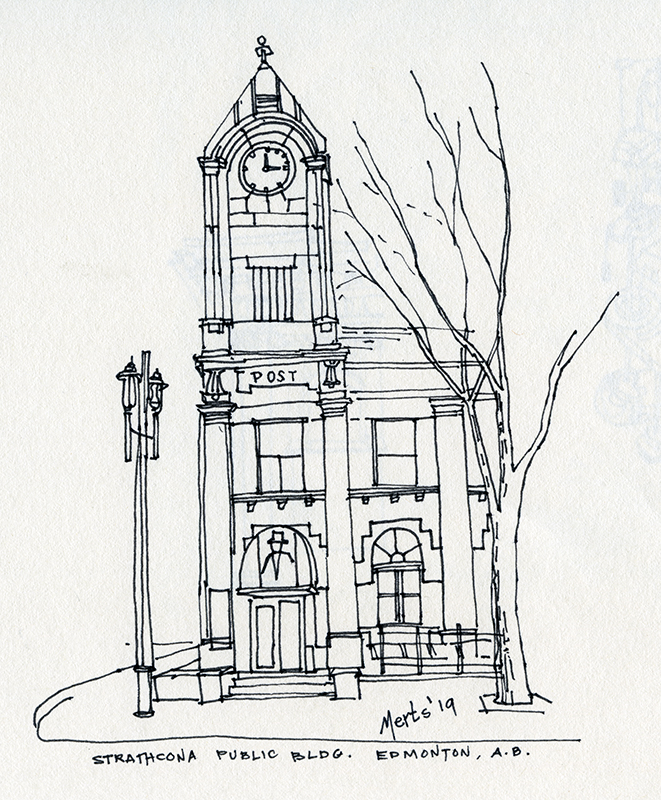 Strathcona Public Bldg.
Strathcona Public Bldg.
Sketch by Merts Belmes, 2019
Constructed between 1911 and 1913, the two storey brick South Edmonton Post Office also served as the Strathcona Public Building, housing the offices of the Customs and Inland Revenue Bureau. It is an example of the shift away from the Romanesque Revival style toward the Edwardian Classical Free style design and exterior decoration of federal public buildings. It was designed by David Ewart, the Chief Architect of the Canadian Department of Public Works.
Embellishments include the ornamental limestone columns, arches, contrasting brickwork and stone clad clock tower. The original tower was "found to be short in height," due to the size of the clock made by Midland Clock Works in Derby, England, and was replaced by a tower ten feet taller in 1915.
The post office function moved to another location in 1976, and the building now houses a restaurant. Strathcona Public Building/South Side Post Office was designated a Provincial Historic Resource in 1985.
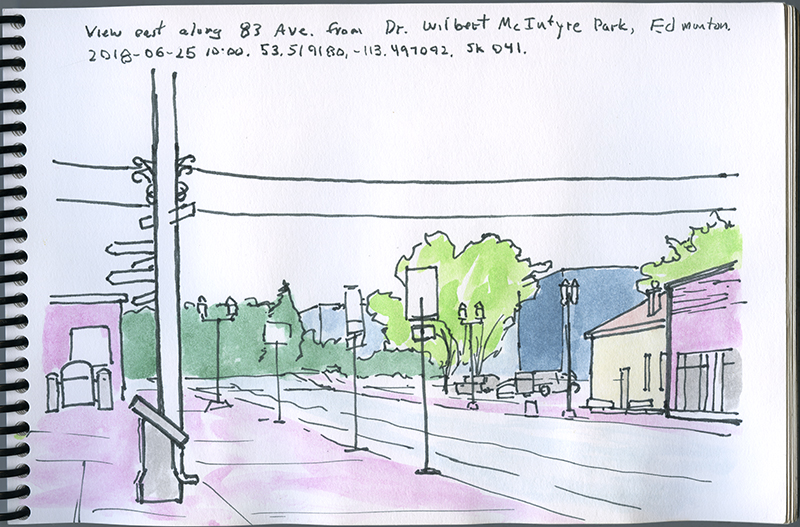


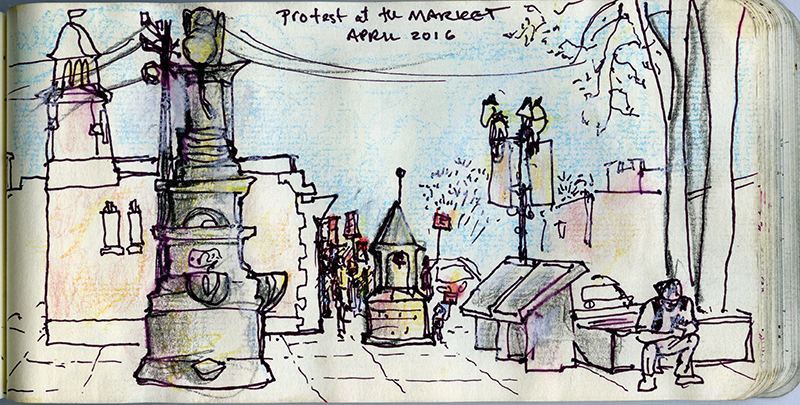

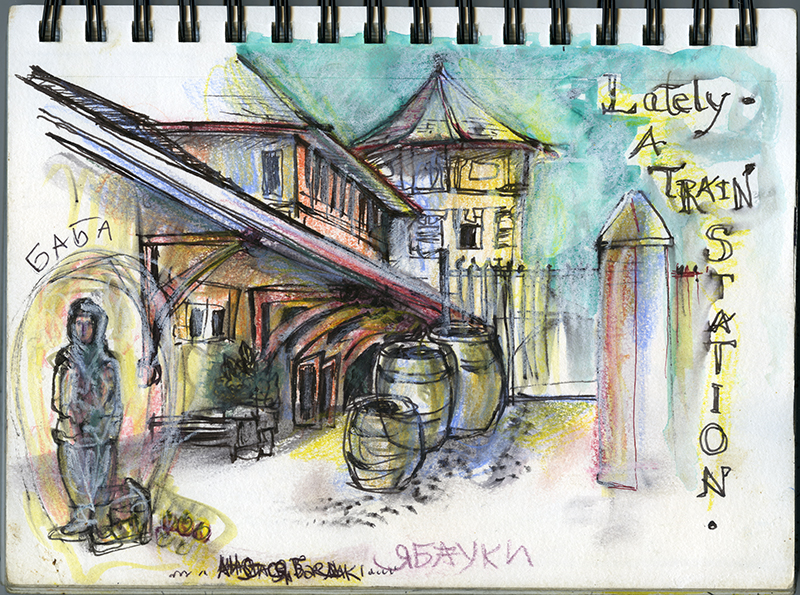
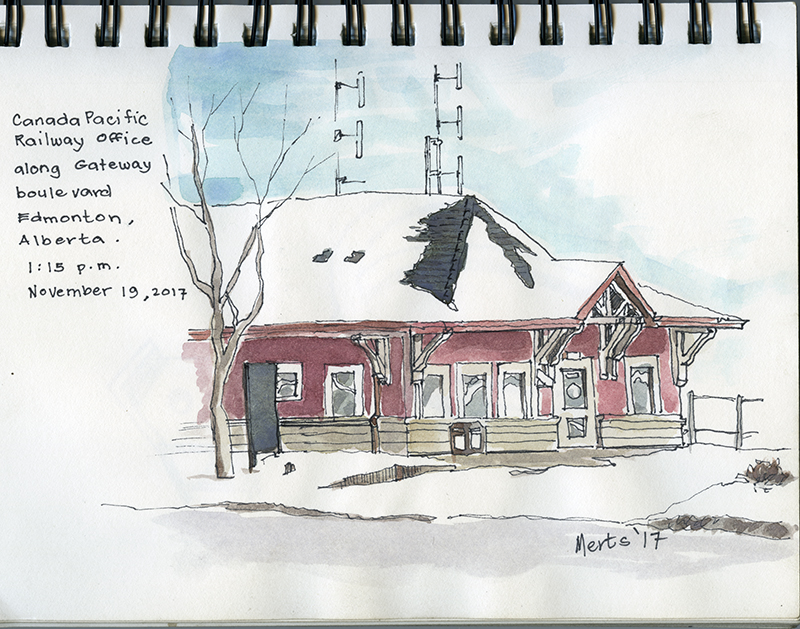
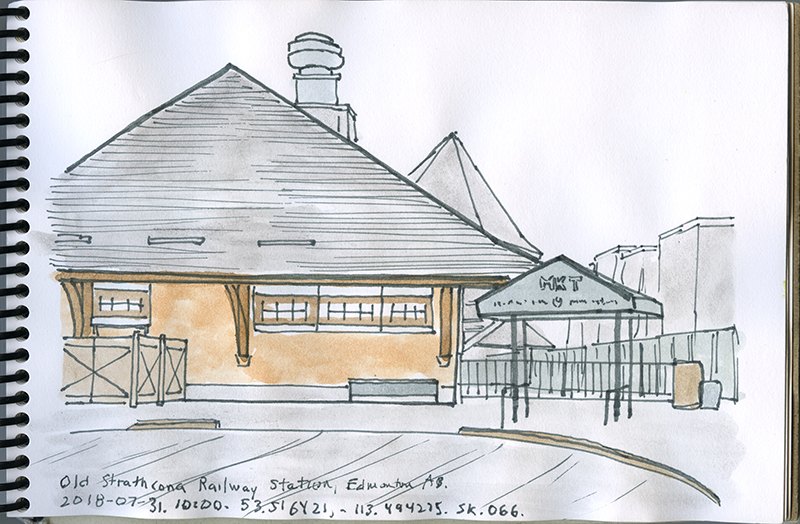
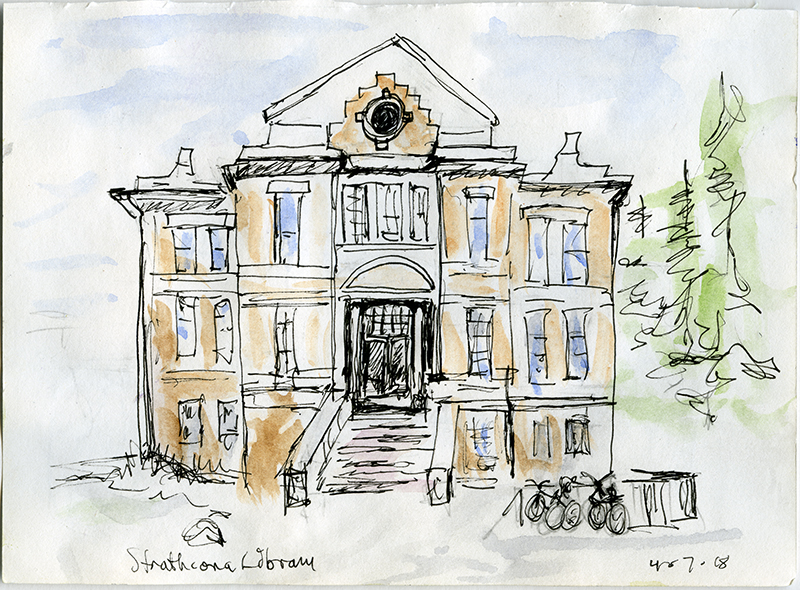
 Strathcona Public Bldg.
Strathcona Public Bldg.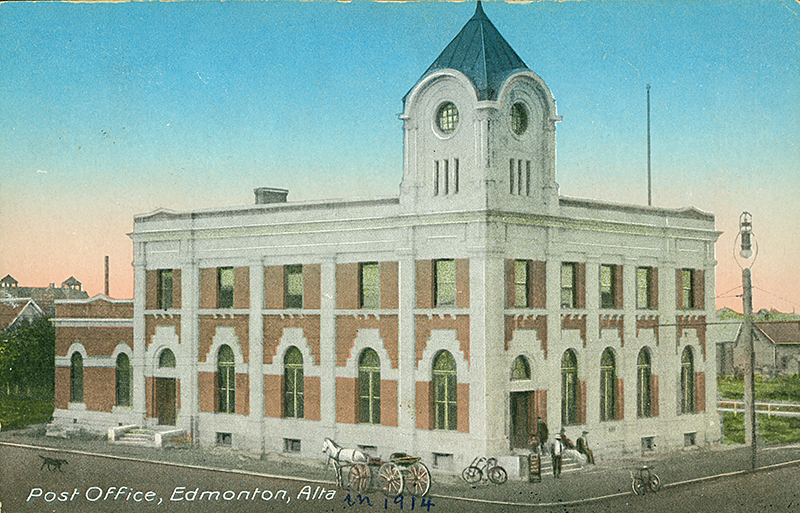
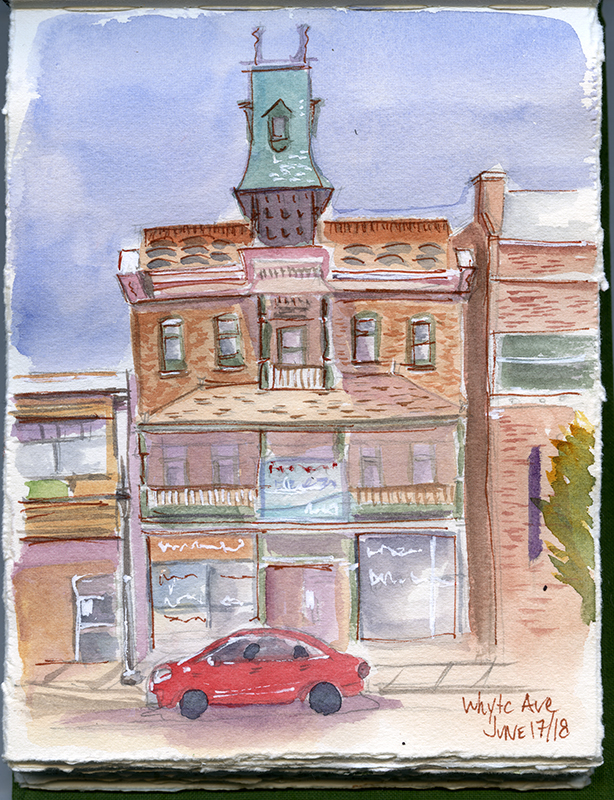 Whyte Avenue
Whyte Avenue